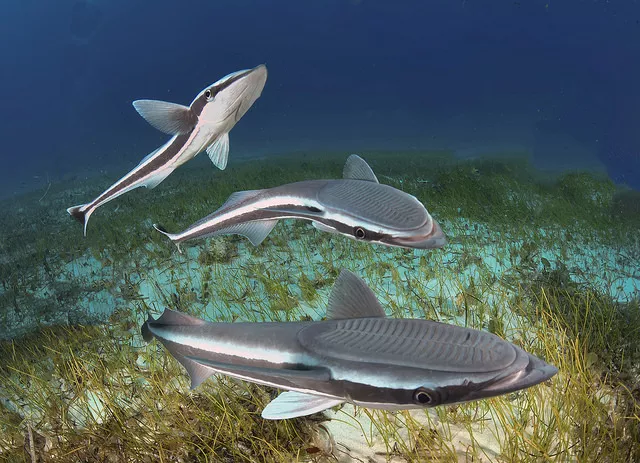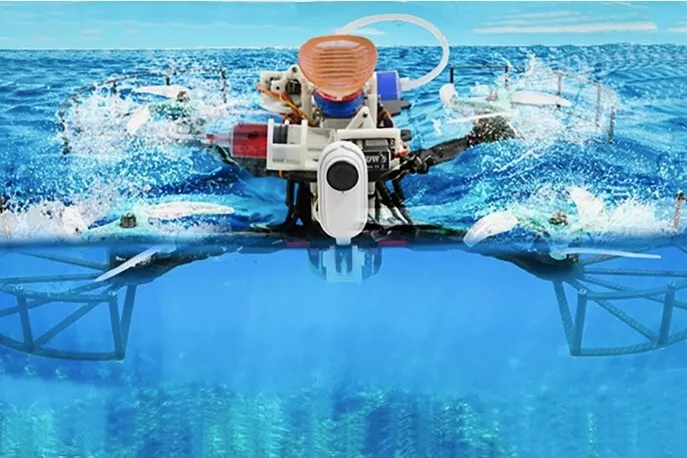Although we have heard that some aerial UAVs can also operate underwater, a new UAV will greatly advance this concept. It is reported that by using a suction cup inspired by fish, it can take a ride underwater -- possibly even on a submarine -- to save battery power.

The prototype was developed by scientists from Beijing University of Aeronautics and Astronautics, Imperial College London and EMPA Institute in Switzerland.
It is understood that it adopts the form of a small waterproof four rotor aircraft with a 3D printed silicone disc, which is inspired by the similar accessories of the flat head of the remora fish. Remora fish use this disc to stick themselves to large animals, such as whales, sharks and manta rays. When the host organism eats, remora fish will be temporarily separated from them to swallow the residue in the water.
Like the natural disk of the remora fish, the synthetic version of the UAV is not just a big suction cup. On the contrary, it contains flexible membranes arranged in parallel, and the space between them forms an independent suction chamber. For fish and UAVs, this feature enables the disc to adhere to curved, rough and uneven surfaces, even if the whole disc does not touch the surface.

The UAV can fly like other four-axis aircraft. At the same time, it can also descend below the water surface - or emerge from under the water surface in just 0.35 seconds. It is reported that this is the fastest conversion speed of any air-water UAV.
When underwater, the propeller end of the helicopter will be passively folded back, so that these propellers can more effectively propel the aircraft in the water. By using the onboard camera, it can find the target and adsorb itself on it. The target can be a moving target - such as a submarine or a whale under study - or a fixed object, such as a pipe or the leg of an oil drilling platform.
"Underwater communication and signal transmission are not easy, so [UAVs] can operate autonomously in the water and in the air to a certain extent, guided by airborne sensors," said Professor Mirko Kova č of EMPA and Imperial College. "One of the advantages of the ability to transition to the air is that it does not necessarily need to communicate underwater, but can jump out of the water and send signals with 5g or Wi Fi networks."
As an added benefit, the aircraft's suction cups can also work on land. This means that if it needs to wander around in a place, it can stick itself to an empty place, such as the eaves of the roof, and then turn off its motor until it needs to move again - otherwise it will have to hover, which will drain its battery faster.
The researchers hope that after the technology is further developed, it can be applied to marine research, search and rescue operations, environmental sensing and industrial inspection.